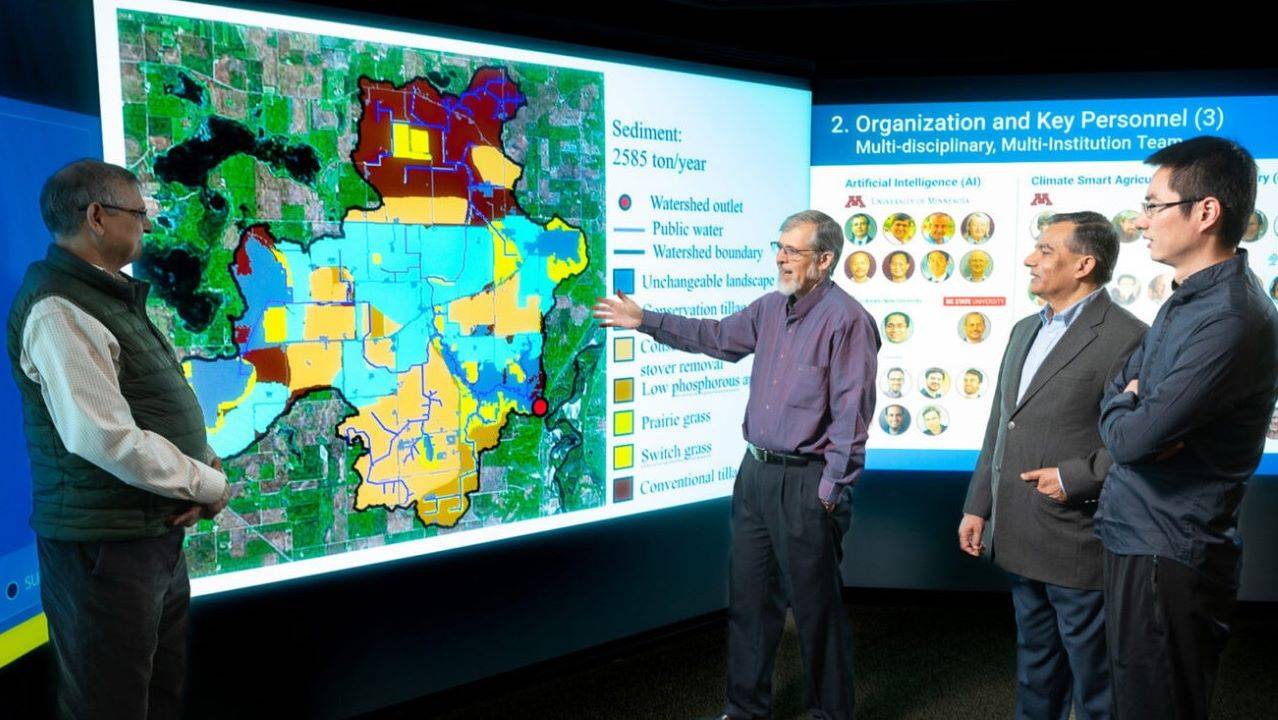
The AI Institute for Climate-Land Interactions, Mitigation, Adaptation, Tradeoffs, and Economy (AI-CLIMATE) aims to use artificial intelligence (AI) to develop more climate-smart practices that absorb and store carbon while also boosting the agricultural and forestry industries' economies.
The new institute is one of seven new NSF and NIFA-funded AI Institutes announced today, and it is part of a larger federal initiative to boost collaborative artificial intelligence research across the country, totalling about $500 million.
AI-CLIMATE is a collaboration between the University of Minnesota's College of Science and Engineering, the Minnesota Robotics Institute, the Data Science Institute, the College of Food, Agriculture, and Natural Resource Sciences, and the Vice President for Research. It will bring together national specialists in artificial intelligence and climate-smart agriculture and forestry from Cornell University, Colorado State University, Delaware State University, Purdue University, and North Carolina State University.
Additionally, the scholars will work with the American Indian Higher Education Consortium (AIHEC) and the tribal governments it represents. "One of the driving factors of climate effects is carbon emissions," explained Shashi Shekhar, the institute's director and a professor in the College of Science and Engineering.
"By 2050, the United States aims to have net zero carbon emissions, and one of the most promising ways to achieve this is through the use of natural systems such as forestry and agriculture as 'carbon sinks.'" Farms and forests can act as carbon sinks, removing more carbon dioxide from the atmosphere than they emit.
Farmers and foresters may be compensated for doing so through carbon markets, or systems in which property owners can sell "carbon credits"- the amount of carbon dioxide stored by their farm or forest- to firms attempting to offset their carbon emissions. However, existing technology makes correctly measuring how much carbon farmers and foresters have sequestered difficult and expensive.
"When farmers touch, smell, and look at the soil, they can tell if it's carbon-rich or not," Shekhar explained. "However, they cannot survey thousands of acres of land manually every year." We're working on simple tools that will allow us to show all of these soil measurements and photos to an AI neural network and let it figure it out for us, saving farmers and foresters time, energy, and money."
The goals of AI-CLIMATE are intimately related to what other federal programmes are doing to advance climate-smart agriculture. The United States Department of Agriculture said in 2022 that it would invest $3.1 billion in its Partnerships for Climate-Smart Commodities programme to help farmers, ranchers, and private forest landowners.
"In the tradition of USDA National Institute of Food and Agriculture investments, this new institute leverages the scientific power of U.S. Land-grant Universities, informed by close partnership with farmers, producers, educators, and innovators to address the grand challenge of rising greenhouse gas concentrations and associated climate change," said Dionne Toombs, acting director of NIFA. "This innovative centre will address the critical need to combat climate-related threats, reduce greenhouse gas emissions, expand the American workforce, and expand new rural opportunities."
"Foundational research in AI and machine learning has never been more critical to the understanding, creation, and deployment of AI-powered systems that deliver transformative solutions across our society," stated Margaret Martonosi, NSF assistant director for computer and information science and engineering. "These recent awards, as well as our AI Institutes ecosystem as a whole, represent our active efforts in addressing national economic and social priorities that hinge on our nation's AI capability and leadership."
(Source: University of Minnesota)
















